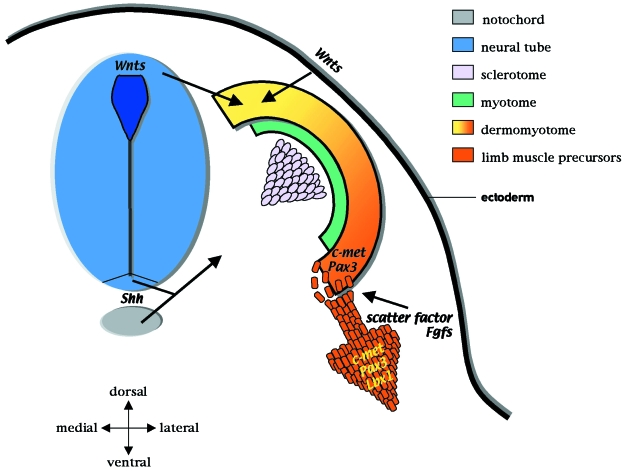Fig. 1.
Factors that control myogenic induction in the somite. The somite is initially specified into two regions – the sclerotome (pink) and dermomyotome (orange–yellow). The sclerotome forms the vertebrae and ribs whilst the dermomyotome gives rise to the myogenic precursors and the dermis. The dorso-medial edge of the dermomyotome (yellow) forms the epaxial muscles. This region involutes to give rise to the myotome (green), consisting of committed myogenic cells (i.e. expressing Myf5) which will form the back musculature. The dorso-lateral region of the dermomyotome (orange) gives rise to the hypaxial muscles. At the limb level, the premyogenic limb precursors delaminate and migrate distally into the developing limb bud (large orange arrow). The molecular signals that control these events are well characterized. Simplistically, Shh, produced by the notochord (grey) and floor plate of the neural tube (blue), induces the sclerotome. Wnt proteins are expressed in the dorsal neural tube and the dorsal ectoderm and, together with Shh, signalling promote myogenesis. The limb premyogenic cells are induced to delaminate by scatter factor and FGFs. These factors are also thought to control migration. The premyogenic cells express Pax3, Lbx1 and the scatter factor receptor, c-met, and are not committed to myogenic differentiation due to repressive signals from the lateral plate mesoderm (Bmp-4). Pax3 and c-met are needed for delamination whilst Lbx1 is required for migration.

